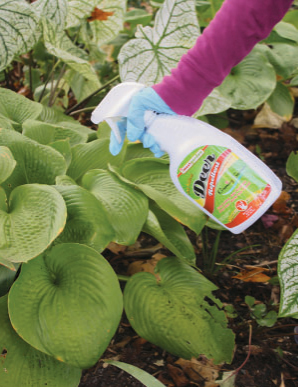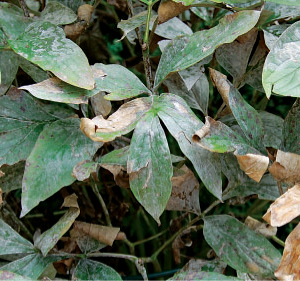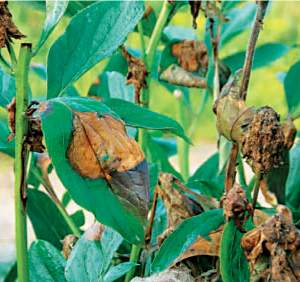Good plant care techniques go a long way toward preventing problems because healthy plants can fight off many problems on their own. It’s important not to give plants more fertilizer than they need—perennials rarely need to be fed, and annuals only need to be fertilized once a month. If the plant leaves look yellow or purple, they might not be receiving enough of the right food because the soil pH is off, so check the pH, and if it isn’t between 5.5 to 7.0, correct it. Other problems require intervention. Here’s how to fix common flower problems.
What You’ll Need
![]() Nitrile gloves
Nitrile gloves
![]() Diatomaceous earth
Diatomaceous earth
![]() Deer repellent
Deer repellent
![]() Beer
Beer
![]() Jar lid or butter lid
Jar lid or butter lid
![]() Fungicide in spray bottle
Fungicide in spray bottle
![]() Ground cayenne pepper
Ground cayenne pepper
Instant Green Thumb
Because there are so many insects, bacteria, fungi, and other creatures in the air, water, and soil, it’s impossible to grow a pest-free garden, nor would you want to. Insects are an important food source for birds. And that caterpillar chewing on the fennel in your vegetable garden? It’s probably a swallowtail butterfly caterpillar. Before treating for pests, decide what level of damage you’re willing to tolerate. You might not have to do anything at all.
Problems and Solutions
Deer Damage
Deer eat the tender growth off of plants (tulip flowers, hosta leaves, rose petals), causing damage. They do tend to leave thorny, spiky, or smelly foliage and flowers alone.
One line of defense against deer is to build a tall fence—at least 10 feet. That’s not practical for larger gardens. An alternative is to plant things that deer don’t like to eat. Daffodils and grape hyacinth are go-to choices for deer-resistant bulbs.
You can also spray plants with deer repellent. In order for repellent to be effective, you should change the brand of repellent every six months or the deer will get used to it.


Slugs
Use beer traps or diatomaceous earth to prevent slugs from damaging your plants. To make a beer trap, put a shallow jar or butter lid on the ground next to the afflicted plant. Fill the trap with beer to catch the slugs. Diatomaceous earth is made from fossilized remains of sea creatures. It is a fine powder that you can sprinkle on the soil around the plant stems to act as a barrier to prevent slugs from eating the plants. Slugs don’t like the sharp edges of diatomaceous earth.
Japanese Beetles
Almost every flowering plant or vegetable is fair game for Japanese beetles. They’re not picky eaters. The best way to control Japanese beetles is to use milky spore to kill their immature form—grubs that live in the lawn and soil. Grubs need to be eating their way through warm soil for milky spore to work. Early fall is the best time to spread milky spore on the lawn according to package instructions.

Powdery Mildew
Powdery mildew strikes plants during hot, dry, humid weather (primarily during humid summers with little rain). This disease makes plants look like someone shook a flour sifter over them. There are plants that are resistant to powdery mildew. Fungicides available from garden centers and home-improvement stores can control powdery mildew. Never compost plant parts that have been infected with powdery mildew—throw them away.

Botrytis (Gray Mold)
If your flower looks like it was just dipped in a bucket of gray dryer lint while wet, it has botrytis. If only some parts of the plants are affected, cut off the diseased parts and throw them away. (Do not compost them.) You can also spray plants with fungicides available at garden centers and home-improvement stores. Always read the labels when spraying fungicides.
